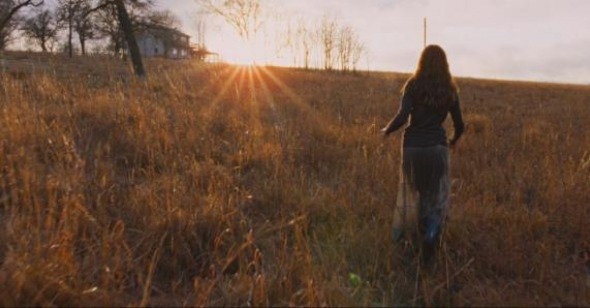This was the year that the spread of lists reached epidemic proportion. A function not merely of the sheer proliferation of list-making (this year’s institution, from a major online publication, of an extensive midyear evaluation felt like the latest addition to the listicle arms race) but also the ever expanding critical networks and award-bestowing bodies, which will themselves into being to become a part of the increasingly hyperbolic end-of-year conversation, lists are increasingly the diseased lifeblood of film writing. The more voters the more homogenous the outcome, and the result is that those films widely deemed the year’s best are invariably consensus picks. So, one not attuned to the astonishing breadth of film culture would think, come this year’s end, there was not much worth watching other than 12 Years a Slave, Gravity, Inside Llewyn Davis, Her, and, god help us, American Hustle, and that it wasn’t worth heading out to the movies in any month that wasn’t December. As always, some of the films pitched for awards are very good, but the larger problem is that film criticism, high as much as low, is threatening to be overtaken by the Tomatometer in all its incarnations. By desperately trying to define an average for a film’s reception, film culture becomes, well, average. The sense that film critical writing is being usurped by aggregating content mills—and the false sense of value they bestow—has never felt at more of a fever pitch.
After all this, then, why bother making the below list at all? Well, aside from the fact that this is Reverse Shot’s tenth year making our top ten list and we want to keep tradition alive, we also believe in our mission to expose readers to those films we feel particularly strongly about. It’s also fun—we’re not immune to the sporting pleasures of listmaking. As usual, we arrived at this list after inviting all major contributors from the past calendar year, i.e., those who wrote at least two articles, to send us their choices for the ten best movies they’d seen (this year, there were 21 participants), accordingly used as votes. The result is by design its own form of consensus, but we feel it reflects a certain shared sensibility among our relatively small stable of writers. And we’re particularly thrilled at the groundswell of support for our number one movie of the year, which follows in the footsteps of past RS number ones that weren’t landing atop many lists in their day (2005’s The New World, 2008’s Flight of the Red Balloon, 2010’s Alamar, 2012’s The Deep Blue Sea). It’s a movie that stirred many of us to our core, while it left many others cold. The disparity of reactions to it reveals it as something more profoundly difficult and radical than any consensus choice should ever be. —MK & JR
[Capsules written by Julien Allen, Eric Hynes, Michael Koresky, Kristi Mitsuda, Adam Nayman, Nick Pinkerton, Jeff Reichert, Elbert Ventura, Chris Wisniewski, and Genevieve Yue.]

1. To the Wonder
In a year when American movies clambered over one another to best epitomize the vulgarity and unquenchable avarice which is presumed to be at the heart of the American Dream, To the Wonder connected to an entirely different tradition: call it American Reverie. Terrence Malick’s sixth film, his first set entirely in the contemporary world, is a work comprised of radiant glimpses. It’s an elaborate choreography of bodies in motion, and all this evasive lilt and whisk and flutter is a dance around monumental structuring absences. For two women (Olga Kurylenko, Rachel McAdams), the absence is the man (Ben Affleck) in their lives, who only seems faintly present in his own life. For the priest (Javier Bardem) in the Oklahoma town where they all live, the absence is God, whom he can no longer perceive as a presence in his daily rounds among the wrecked humans who constitute his flock. Malick’s signature voiceovers are plainspoken yet enigmatic here, and using these fleeting pensées in concert with a camera-eye that transforms a suburban drive-thru into something almost ethereal, the director subtly expresses an elusive but familiar feeling. It’s the feeling of having been somewhere before, of wanting to get back there, but having forgotten the way, though it seemed so simple once. No matter, though. We will look again tomorrow. —NP
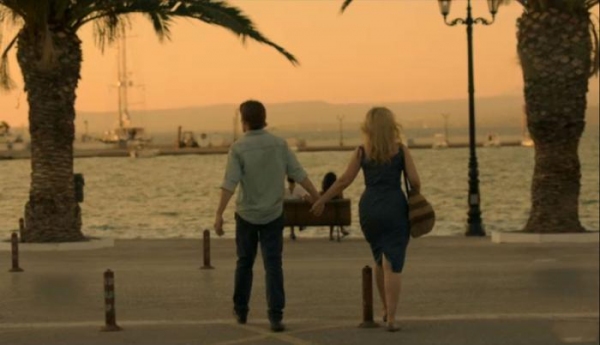
2. Before Midnight
How did it come to pass that a little American romance made way back in 1995, following two talky, cocksure, and often callow twentysomethings as they pass an impromptu evening together in Vienna, turned out to be the launching pad of one of the richest experiments in mainstream cinema? No one expected that, nine years after its release, Before Sunrise would receive a sequel in the form of the winsome Before Sunset (Reverse Shot’s best film of 2004, #4 best of the decade). Now, nine years after Sunset, the ongoing collaboration between Richard Linklater, Ethan Hawke, and Julie Delpy has produced Midnight, the newly minted trilogy’s most harrowing chapter. In 2004, we expected we’d leave Jesse and Celine for good in Paris; for long stretches of the unexpectedly dire Midnight, you might wonder if Celine might leave Jesse for good in Greece. That these three artists have resisted providing a wish-fulfilling victory lap for fans of the first two films, choosing instead to continue unpeeling the onion, adding layer atop layer to the lives of two increasingly complex, no less talky, but (mostly) less cocksure and callow characters, is testament to the rangy spirit of restless, humanist inquiry that’s the hallmark of all three films—none more so than Midnight. If what cinema added to the existing arts was the ability to show us the passing of time, what we’ve now witnessed with the addition of Before Midnight to Sunrise and Sunset is an apotheosis of what movies can offer—by utilizing real time as their canvas, Linklater and his collaborators have created narrative cinema’s most rigorous (and approachable) examination of aging and the many turns lives can take. Perhaps the only thought more exciting to contemplate than how richly and rewardingly Midnight rounds out the series is that the saga might not even be over. —JR
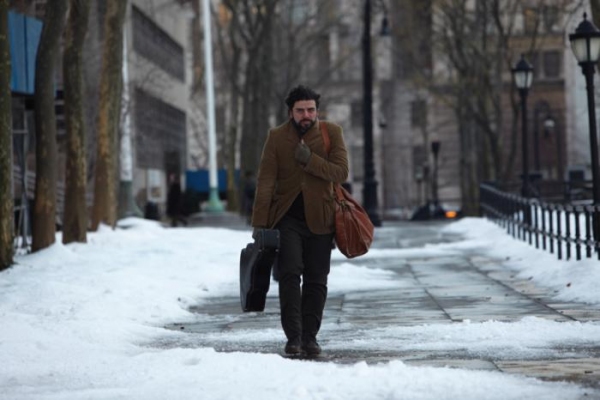
3. Inside Llewyn Davis
Is he swimming or is he drowning? It’s hard to tell with Llewyn Davis, the most finely drawn and frustratingly human character Joel and Ethan Coen have yet created. As with A Serious Man’s Larry Gopnik, his closest analogue in the Coens’ sixteen-features-strong catalogue, Llewyn (Oscar Isaac) is both victimized by circumstance and complicit in its worsening effects. And as in Greek tragedy, or Chekhovian comedy, it’s character flaw as human condition. Each mistimed leg-kick, each defiant gesticulation against the tide sends him further under. But if Larry was Job, faced with one escalated calamity after another, Llewyn is more like the Sisyphus of Greenwich Village, infinitely cycling through paltry-paying club gigs and ratty couches, aggrieved lovers and interchangeable acquaintances, always to arrive—quite literally thanks to the film’s exquisitely diagrammed script—right back where he started. Likewise, every moment that feels transcendent is immediately, cruelly but systematically sunk back to earth. The dewy, down-home harmonizing of “Five Hundred Miles” gets torpedoed by Max Casella’s blunt assertion that “I’d sure like to fuck Jean”—Jean being Carey Mulligan’s raven-haired, sweet-voiced sweater girl; Llewyn’s centerpiece solo performance of “The Death of Queen Jane,” a rise-to-the-occasion audition for F. Murray Abraham’s Chicago kingmaker Bud Grossman, is met by a dagger-to-the-heart “I don’t see a lot of money here”; and a serenade for his post-verbal father is answered by incontinence. Yes these are negations, but they’re not erasures. For despite the litany of things that go wrong for Llewyn—from knocking up Jean to losing his Merchant Marines license (I don’t know of a film that has better tracked how a poor man can be nickel and dimed into immobility)—we’re granted beauty too, with how he hammers tongue against upper mouth to incant “well” in “Fare Thee Well (Dink’s Song),” to the pure, unconditional affection he’s shown by the dear Gorfeins, a sociologically precise bourgie culturati couple who are easy to peg but impossible to quantify. Like so many of us, Llewyn remains suspended between who he is and what he might be, between what he’s done and what’s been done to him. Are we living or are we dying? —EH

4. Museum Hours
The Louvre, as museum guard Johann (Bobby Sommer) observes in Jem Cohen’s Museum Hours, was founded on the democratic ideal of making art accessible to the masses. Too often, however, art museums become just as rarefied as the wealthy private collections the French revolutionaries sought to liberate; they are elitist institutions that reinforce, rather than restructure, divisions of class and taste. Yet Cohen sees the works within Vienna’s Kunsthistorisches Museum as continuous with the city beyond, as if no walls separate them. He accomplishes this visually, frequently matching its paintings to the world outside. One such pairing cuts from a detail in Breugel’s Return of the Hunters, with one bird in flight and another perched in a barren tree, to a shot of a crow alighting from a signpost in gray, wintery, present-day Vienna. Under the watchful gaze of Johann, who is as curious about the museum’s visitors as the Breugels and Rembrandts they peer at, Cohen constructs a vision of a city in which art is quite literally everywhere. And through the unlikely friendship of Johann and Ann (Mary Margaret O’Hara), a Canadian woman attending to a comatose relative in the hospital, we see this city as Ann encounters it and as Johann remembers it. They visit and describe to each other major sites, like St. Stephen’s Cathedral, half-wrapped in scaffolding, or the solemn Judenplatz Holocaust Memorial, as well as smaller phenomena, like crooked cigarettes soaking in a puddle, a dog resting its head on a café floor, and, in a museum display case, an ancient stone bust with a worn-out nose. Museum Hours could be considered a platonic romance, but it is also a kind of quiet adventure film. It is about discovering a new place hidden within a familiar one, or of noticing things never before seen. In one of his many voiceover ruminations, Johann recounts a time in which he saw an egg in one of Breugel’s paintings. He then set out to find more eggs elsewhere in the artist’s extraordinarily detailed canvases. Before he knew it, Johann remarks, an hour and a half had passed pleasantly by. At one point, Bruegel’s paintings are described by a museum guide (Ela Piplits) as “practically documentary”—not unlike Cohen’s own lyrical blend of documentary and fiction. —GY
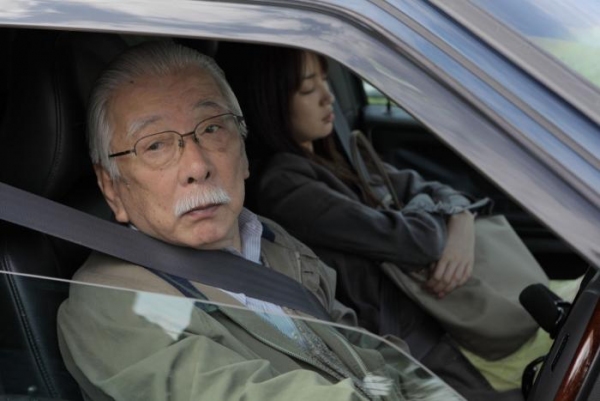
5. Like Someone in Love
The idea that art is created in part by the audience experiencing it comes from way back, but it has now found one of its greatest exponents. Ozu used to say, “It is the films that watch us”; for Kiarostami, the work and its audience are one and the same—the artist expresses a vision and the audience captures and multiplies it. Like Someone in Love is the story of an encounter: young Japanese student Akiko defaults on a meeting with her visiting grandmother to fulfill an escort “contract” with an elderly client, Takahashi. In telling it, Kiarostami prioritizes suggestion and ambiguity, inviting us to engage with and complete the work by questioning everything: what do Akiko and Takahashi want? What did they do that night? What are their true feelings about each other? We learn much about Akiko from her grandmother’s plaintive voicemail messages expressing her concern and imploring her to come home—far more in fact, than from what is happening on the screen. Near the end, Akiko is addressed by Takahashi’s neighbor, who has grown old pining for him from her window—unrequited and latterly unnoticed—but seems imprisoned in the house by her duties to her disabled brother: an astonishing sequence which turns the film (and us) inside out, as we contemplate the missed opportunities on both sides. These two elderly women, the grandmother and the neighbor, show us that, in Kiarostami’s world, tragedy touches all of us, even the unseen. As for Takahashi, we may have to decide for ourselves what he really hoped for that night, but he soon evolves into Akiko’s counselor and protector. He’ll even risk his own life for her, utterly selflessly, like someone in love . . . After the Tuscan promenade of Kiarostami's last guessing game, Certified Copy, here a Tokyo roundabout becomes a sentimental fairground ride (Akiko asks the driver to go around again as she spots her grandmother in the center, beneath a statue, waiting in vain for their meeting) and cars become moving theaters, their paintwork and chromes reflecting the world around them, their occupants playing out their tiny stories inside. By returning to vehicular storytelling, it seems the further the exiled director of Ten travels from Iran, the closer his cinema gets to home. —JA

6. Frances Ha
A little bit French New Wave with its jump cuts and music selections, a little bit Woody Allen’s Manhattan in its chattiness and milieu shot in beautiful black-and-white, Frances Ha still feels so fresh. As if issuing a formal corrective to his underuse of Greta Gerwig in Greenberg—in which she played a sweet cipher inscrutably interested in Ben Stiller’s wayward titular character—Noah Baumbach this time out affords a showcase for her insouciant charm and talent, which was apparent from mumblecore breakout Hannah Takes the Stairs onwards. Widely perceived as a millennial snapshot, the film transcends a strictly generational reading. As usual, Baumbach crafts a lead character who isn’t always likeable but who rings with humanity in her false starts and frailties; it’s a representation more forgiving than in past endeavors—perhaps owing to his real-life relationship with Gerwig and her collaborative input—and the softness suits. Refusing to believe her best friend (Mickey Sumner) has essentially broken up with her or that her chances of becoming a big city dancer at 27 are slim, Frances is both appealing in her guilelessness and irritating in her lack of self-awareness. And Gerwig plays her, flaws and all, with an infectious zeal. Given that American cinema primarily prizes women at intersections either romantic or sexual, the act of finding oneself as a female is often equated with finding a man (even a movie as smart as Bridesmaids, which dealt with similar issues, falls prey to this). So in charting its protagonist’s coming-of-age by focusing on her friendships and career, Frances Ha feels as precious as a bubble: delicate, perfect unto itself, a small wonder to behold. —KM
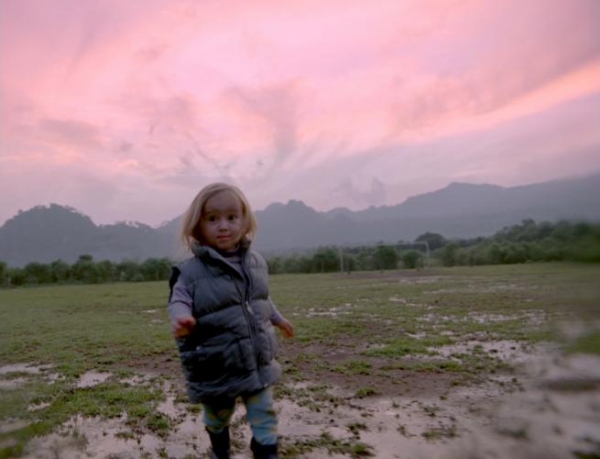
7. Post Tenebras Lux
Something like an art-cinema of attractions, Carlos Reygadas’s work of sinister poetry is intent on providing the viewer with one awe-inspiring set piece after another. That its many wonders were served up in a highly metaphorical register makes it initially seem like a daunting, even unapproachable filmic object. Yet watched closely and without fear, Post Tenebras Lux reveals itself as purely emotional, a fragmented family portrait so trapped inside its own exhilarated, frightened headspace that it goes in and out of dreams and alternate realities and possible futures. Beginning with two back-to-back childhood nightmares, each realized with extraordinary virtuosity (a toddler’s pastoral reverie that turns to terror as the sun goes down; a silent home invasion in the middle of the night by a glowing red animated Lucifer, seen only by a young boy out of bed), Reygadas’s film firmly establishes itself as existing in a liminal state. Soon, an idyllic, early-morning vision of a family waking up—children comforted after bad dreams, crawling into bed with their parents. This too, though, is the dream before the more extended nightmare: of addiction, violence, and irreconcilable class warfare, all doled out in non-chronological order, punctuated by flights of fancy. In his fictional characters—a bourgeois architect, his dissatisfied wife, their tiny kids, both played by Reygadas’s own offspring, all living in a conspicuously modern home in the middle of impoverished rural Mexico—the director has manufactured achingly personal mirror images of himself and his own family. Naturally those reflections come out distorted, which is made visually clear by the exquisitely odd blurring effects Reygadas places at the edges of his 1.33:1 frame during exterior shots, achieved by a purposely misplaced lens. Like everything else in Post Tenebras Lux, this slight deformation is both distressing and surpassingly beautiful, the expression of an artist struggling with parenthood, love, artistry, and his own social position in equal measure. —MK
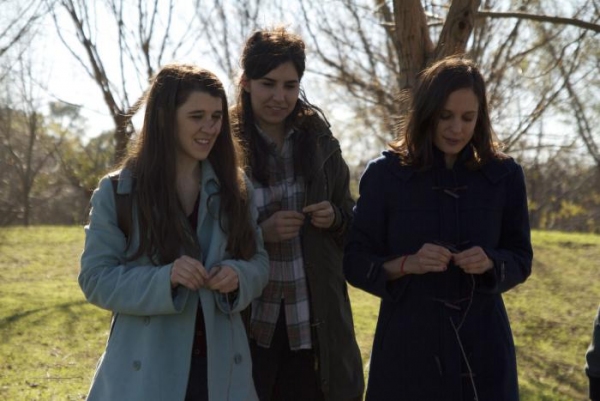
8. Viola
Considering that I’ve already stumped for Matías Piñeiro’s gently oneiric whatsit as the movie that gave me the most hope for the cinematic medium circa 2013, staking a claim for it as one of the year’s best films should be a snap. And yet no matter how much I write about—or think about—Viola, its essence keeps eluding me: I feel like I’m chasing a very nimble, very playful animal across its home turf. With its emphasis on actors and acting—everything from backstage exercises to public stagings of Shakespeare—and unabashed fixation on the (varied, unconventional) beauty of its female leads, Viola strikes me as somewhat Rivetteian, except without the old master’s sense of monumentalism; Piñeiro’s achievement here is to craft a work whose miniature scale belies neither depth nor detail—nor the sudden surges of feeling we often associate with great art. I can describe the film’s confident, intimate camerawork and its structural gamesmanship, including the most dislocating dream sequence this side of De Palma, and I can guess at some of Piñeiro’s intentions (to demonstrate the beauty of Shakespearean language even in exquisite-corpse rhythms), but I can’t quite get my hands—or head—around why I love it so much. Which of course only makes me love it more. —AN
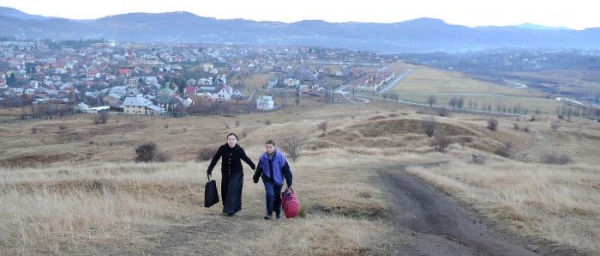
9. Beyond the Hills
At the beginning of Beyond the Hills, its young female protagonists Voichita (Cosmina Stratan) and Alina (Cristina Flutur) are reunited after years of separation, but circumstance and institutional forces outside their control have already conspired to alienate them from one another irreparably. Cristian Mungiu, the movie’s writer and director, drops hints of their backstory: a friendship forged as children in an orphanage where they endured poverty and abuse, a bond—perhaps romantic, certainly sexual—that gave each the modicum of solace necessary to survive. For Voichita, spiritual devotion to a fringe Christian sect has replaced Alina’s love, providing her with the sense of meaning and belonging she so desperately craves. Alina has had no such luck, drifting from a foster home to work as an immigrant in Germany before returning to Romania to lure Voichita away from her cultish church. Alina resolves to take her friend to Germany; Voichita to save Alina’s soul. Each is fiercely committed to her cause, and over the movie’s grinding 150-minute running time, their battle of wills devolves into a devastating horror story and a stinging indictment of religious fervor and institutional neglect. No less formally rigorous or emotionally shattering than the Palme d’Or winning 4 Months, 3 Weeks, and 2 Days, which catapulted Mungiu to the front ranks of international art cinema, Beyond the Hills once again finds the director using the story of two desperate women to reveal the systematic failings of a society that leaves its least powerful citizens little room to hope for worldly comfort. Mungiu’s “Romanian exorcism movie,” like his “Ceausescu-era abortion movie,” is of a specific time and place, but the root causes of the tragedy it depicts are grounded in all-too-recognizable human need. —CW
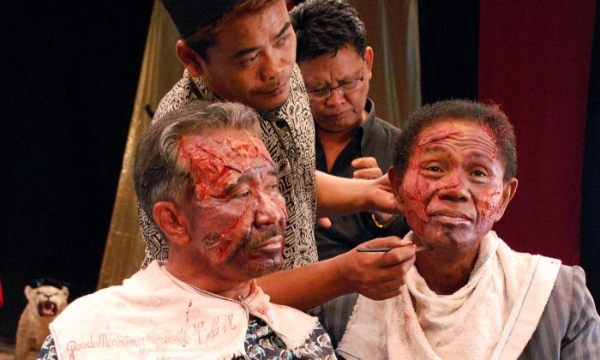
10. The Act of Killing
Joshua Oppenheimer and Christine Cynn’s documentary about the 1965 massacre of more than a million Indonesians by the military and affiliated gangs does more than commit—finally—the story one of the twentieth century’s bloodiest episodes to film. It offers us a peek into an alternate universe where a newspaperman openly admits that he peddled propaganda, a gangster ruminates on the joys of rape (especially of minors), and a grinning TV host raves about the techniques pioneered by her executioner guest. A strange, riveting essay about murder and impunity, The Act of Killing breaks new and treacherous ground for the form in its search for the ecstatic truth. We watch mouth agape at its flights of fancy; we wander gingerly onto the dark territory it maps. But while knotty questions about memory, history, and performance may preoccupy The Act of Killing, it is never more essential than when it is at its simplest. In this seemingly impossible work of reportage, we see the same scene repeat itself over and over again: a man who has perpetrated evil deeds recounts—sometimes with pride, sometimes matter-of-factly, rarely with guilt—his horrific acts on camera. Seven years of muckraking haven’t been for naught: the film has become something of samizdat in Indonesia, which for decades has hidden away the crimes of ’65 in the national attic. The act of killing may be the movie’s subject, but the act of talking about killing is where its appalling power ultimately lies. —EV
